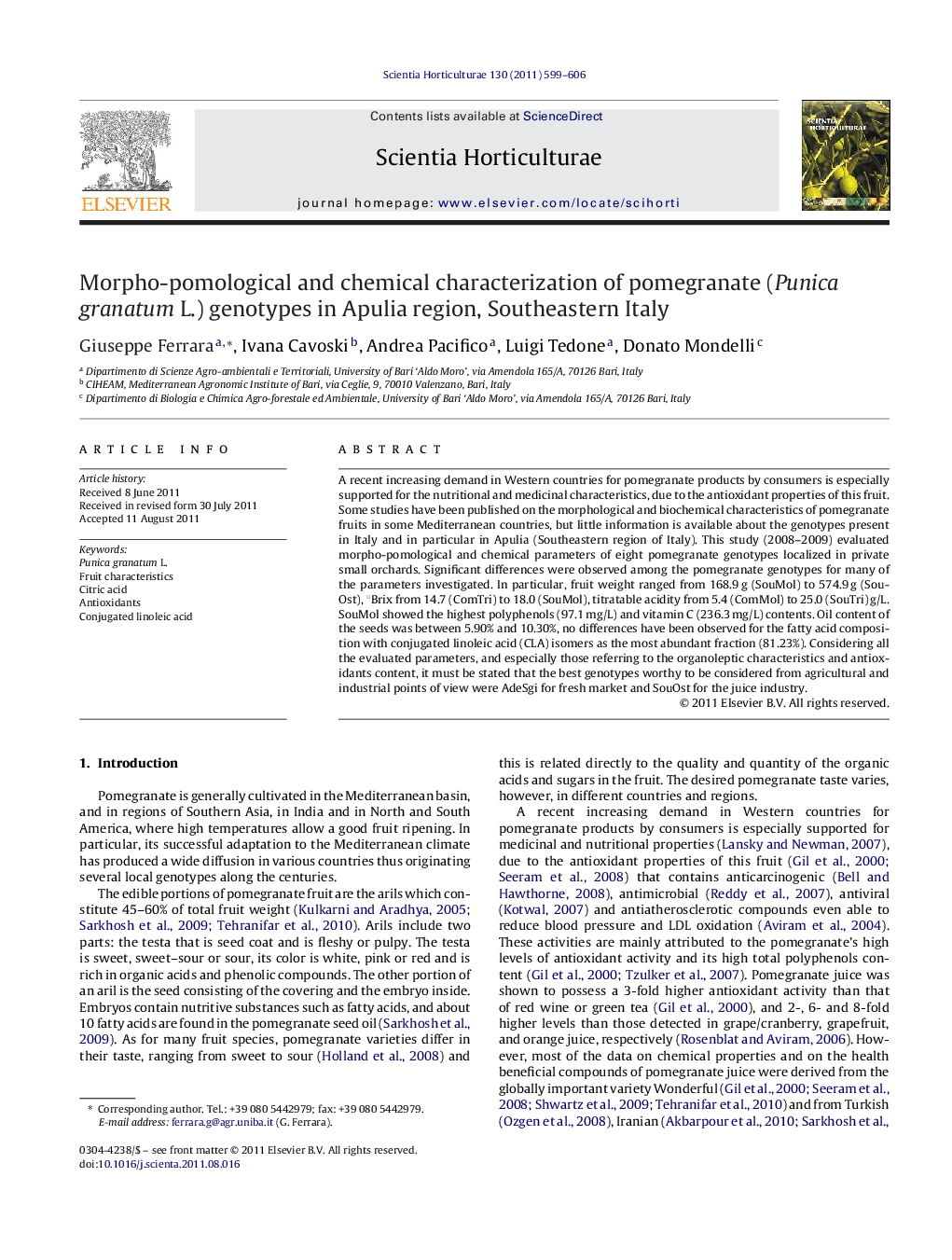| Article ID | Journal | Published Year | Pages | File Type |
|---|---|---|---|---|
| 4567971 | Scientia Horticulturae | 2011 | 8 Pages |
A recent increasing demand in Western countries for pomegranate products by consumers is especially supported for the nutritional and medicinal characteristics, due to the antioxidant properties of this fruit. Some studies have been published on the morphological and biochemical characteristics of pomegranate fruits in some Mediterranean countries, but little information is available about the genotypes present in Italy and in particular in Apulia (Southeastern region of Italy). This study (2008–2009) evaluated morpho-pomological and chemical parameters of eight pomegranate genotypes localized in private small orchards. Significant differences were observed among the pomegranate genotypes for many of the parameters investigated. In particular, fruit weight ranged from 168.9 g (SouMol) to 574.9 g (SouOst), °Brix from 14.7 (ComTri) to 18.0 (SouMol), titratable acidity from 5.4 (ComMol) to 25.0 (SouTri) g/L. SouMol showed the highest polyphenols (97.1 mg/L) and vitamin C (236.3 mg/L) contents. Oil content of the seeds was between 5.90% and 10.30%, no differences have been observed for the fatty acid composition with conjugated linoleic acid (CLA) isomers as the most abundant fraction (81.23%). Considering all the evaluated parameters, and especially those referring to the organoleptic characteristics and antioxidants content, it must be stated that the best genotypes worthy to be considered from agricultural and industrial points of view were AdeSgi for fresh market and SouOst for the juice industry.
► A recent increasing demand in Western countries for pomegranate by consumers. ► Little information about the genotypes present in Italy and in particular in Apulia. ► Significant and worthy differences were observed among the apulian genotypes.
